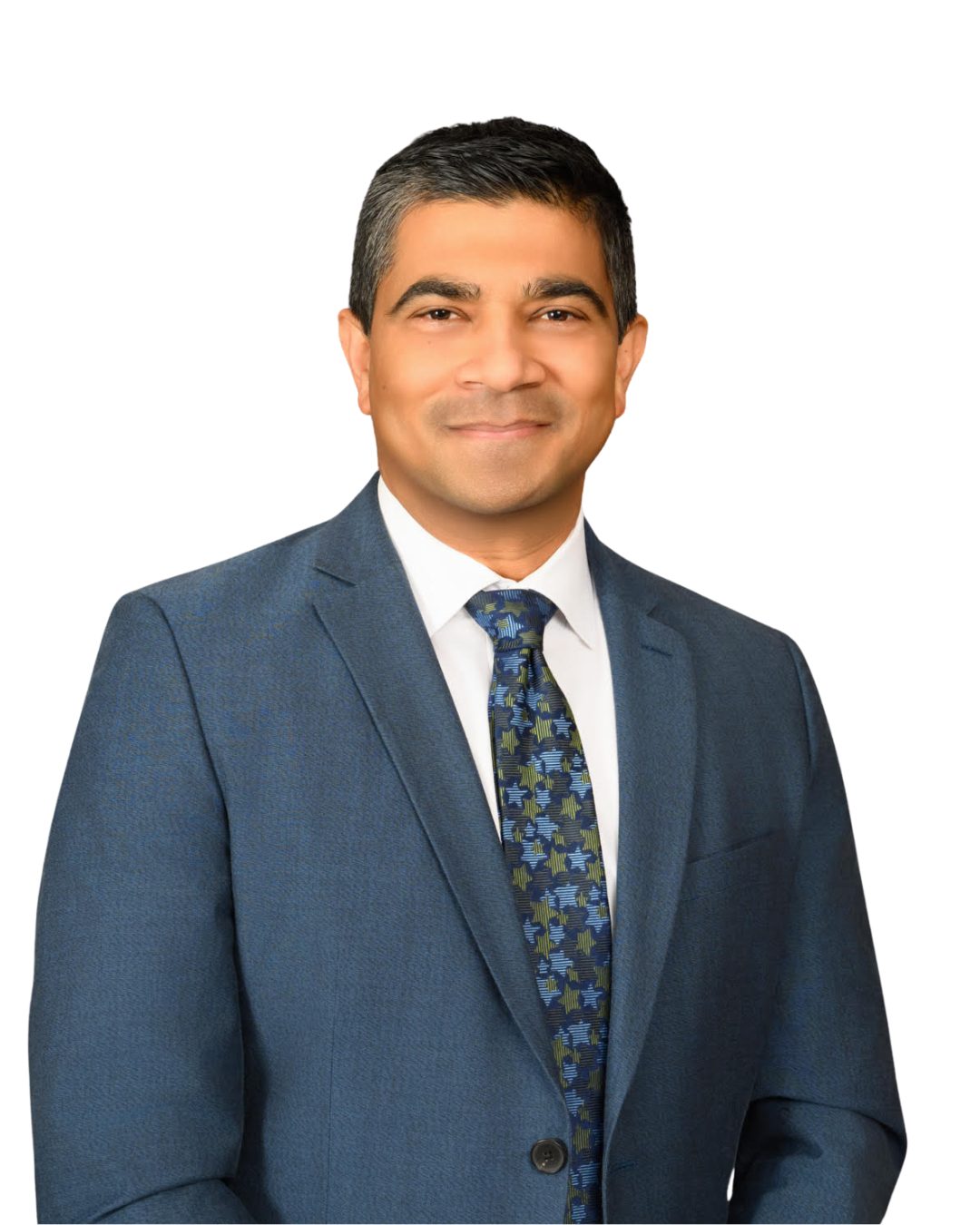
Why Consider Spinal Fusion Alternatives?

Get to Know Our Spine Specialists
Find a Specialist Near You
Get the care you deserve close to home at one of our New Jersey or New York Locations.
Spinal Fusion Alternatives

What Is Spinal Fusion?
Spinal fusion is a surgical procedure that involves permanently joining two or more vertebrae in the spine to eliminate motion between them. Over 350,000 spinal fusion surgeries are performed every year.
The procedure is usually performed to treat conditions such as:
- Spinal fractures
- Spinal deformities
- Severe cases of degenerative disc disease
Spinal fusion is a major surgery that requires a lengthy recovery period, and it may not be suitable for all patients. According to research, as many as 20% of patients experience persistent post-surgical pain after spinal fusion surgery.
OrthoEast is dedicated to delivering comprehensive care to our patients, starting from the point of timely evaluation all the way to treatment and recovery.
Our board-certified physicians are committed to providing exceptional results for patients who require surgery, as well as those who are looking for spine fusion surgery alternatives to relieve pain and reach their personal goals.
Our specialists include Dr. Arash Emami, Dr. Ki S. Hwang, Dr. Kumar G. Sinha and Dr. Nikhil Sahai, who have a proven track record of delivering outstanding outcomes.
Schedule a consultation with our specialists to explore your options, find answers to your questions and prepare for the procedure as well as recovery.
Why Seek Alternatives To Spinal Fusion?
While spinal fusion surgery can be effective in treating certain spinal conditions, it also carries some risks and drawbacks that may make some patients seek alternative treatment options.
Potential risks and drawbacks of spinal fusion surgery include:
One of the main drawbacks of spinal fusion is the loss of mobility in the affected area.
When the vertebrae are fused together, the patient loses the ability to bend, flex, or twist that particular segment of the spine for a certain period of time, resulting in a significant reduction in spinal mobility.
Patients are usually given permission to fully resume their active lifestyle, which may include activities such as bending, lifting or twisting 6 months after the spinal fusion surgery.
In some severe cases, the clearance to partake in those activities can take up to 12 months.
Sometimes the bones do not fuse together properly after surgery, which is known as non-union. This can cause continued pain and may require additional surgery.
Non-union can occur due to a variety of reasons, such as improper alignment of the vertebrae during surgery, poor bone density or quality, excessive movement or stress on the fused area, or the patient’s failure to follow post-operative instructions.
In some cases, the bones may not fuse properly, forming a false joint, which is known as pseudoarthrosis. This can also cause continued pain and require additional surgery.
Other risk factors for pseudoarthrosis include excessive smoking, poor nutrition, and certain medical conditions such as osteoporosis.
As with any surgery, spinal fusion carries the risk of complications. Spinal fusion complications may include:
- Infection
- Bleeding
- Nerve damage
- Anesthesia complications
- Chronic pain or discomfort following surgery
- Failure of the fusion to heal properly
- Adjacent segment disease
We will provide you with individualized information on the risks and benefits of the procedure based on your specific medical history and condition.
Recovery from spinal fusion surgery can take several months, during which time patients may need to limit their activity and may require assistance with daily tasks.
The procedure involves the use of metal hardware, bone grafts, and artificial discs, which take time for the body to heal and integrate.
Common Spinal Fusion Surgery Alternatives
If your back pain or condition cannot be managed by non-surgical treatments like massage, decompression exercise or heat application, surgical spinal fusion alternatives include:
This minimally invasive procedure involves injecting a combination of a local anesthetic and a steroid medication into the epidural space surrounding the spinal cord.
The goal of the injection is to reduce inflammation and relieve pain in the affected area of the spine.
The procedure is typically performed using imaging guidance to ensure accuracy and safety, and it can be repeated as necessary depending on the patient’s response.
This alternative may be recommended for conditions such as a herniated disc, spinal stenosis, degenerative disc disease, or sciatica. Our team can advise as to whether it is a suitable treatment option based on your condition, medical history, and recovery goals.
This is a regenerative medicine technique that involves injecting stem cells into the affected area of the spine with the goal of promoting healing and tissue regeneration.
It may be recommended for patients who have degenerative disc disease, facet joint syndrome, or other spinal conditions that can be treated with cell-based therapies.
The stem cells can be obtained from the patient’s own body (for example from a bone marrow) or from a donor source. The cells are then processed and injected into the affected area of the spine using imaging guidance to ensure accuracy.
This is a technique that uses specialized hardware to stabilize the spine without fusing the affected vertebrae.
It may be recommended for patients with conditions such as degenerative disc disease, spinal stenosis, or spondylolisthesis, where the vertebrae have slipped out of place.
Dynamic stabilization can help preserve spinal mobility and reduce the risk of complications associated with spinal fusion surgery.
Minimally invasive spine surgery offers a less invasive alternative to open back surgery, with less disruption of the surrounding tissues and muscles.
This technique may be recommended for patients with conditions such as herniated discs, spinal stenosis, or spinal instability, where the surgeon can access and treat the affected area using small incisions and specialized instruments.
Minimally invasive spine surgery can offer several potential benefits over traditional open surgery, including less blood loss, reduced risk of infection, and faster recovery times.
Intradiscal Electrothermal Therapy (IDET) is a procedure that is typically used to treat patients with chronic low back pain caused by a damaged or herniated disc.
During the procedure, a small catheter is inserted into the affected disc, and a heated wire is used to shrink and seal the damaged disc tissue, which can alleviate pain and reduce inflammation.
Spinal Fusion Alternatives at OrthoEast
At OrthoEast, we understand that spinal fusion surgery is not always the best option for every patient with spinal conditions.
We offer a range of spinal fusion surgery alternatives, including:
Microdiscectomy is a minimally invasive surgical procedure that is commonly used to treat sciatica caused by a herniated disc in the lower back.
There are three ways that microdiscectomy can be performed:
- Mini-open: This technique involves making smaller incisions compared to a conventional discectomy but is similar in approach.
- Tubular: This method uses a specialized expanding tube to access the affected disc during surgery.
- Endoscopic: This technique involves making a small incision and using a tiny video camera and specialized instruments to visualize and operate on the targeted area.
After the surgery you can expect to recuperate in our New Jersey center, for usually one to two days, during which time we’ll monitor your condition, manage your pain and help you begin the recovery process.
Laminectomy is a surgical procedure in which the back portion of a vertebra is removed in order to relieve pressure on the spinal cord or nerves.
This procedure can be performed with or without spinal fusion, depending on the specific condition it is meant to treat. Laminectomy without fusion may be recommended for patients with spinal stenosis or other conditions that cause nerve compression without significant instability in the spine.
Similar to microdiscectomy, you can expect to stay in our spine center for a few days after surgery, where we’ll provide you with personalized care of your road to recovery.
Artificial discs, also known as disc replacement surgery, is a procedure in which a damaged or degenerated spinal disc is removed and replaced with an artificial one.
The success rate for disc replacements is typically higher than the success rate for spinal fusion surgery.
This procedure can help preserve spinal motion and reduce the risk of adjacent segment degeneration, a common complication of spinal fusion surgery. This treatment could also be an option for individuals experiencing long-lasting pain caused by degenerative disc disease or spondylolisthesis.
You can expect to stay in our healthcare facility for a couple of days after the surgery, where our team will keep a close eye on your pain and recovery.
A percutaneous endoscopic discectomy is a minimally invasive surgical procedure that is used to treat herniated discs in the lower back or neck.
During the procedure, a small incision is made in the back or neck, and a special endoscope is used to remove the herniated portion of the disc. This procedure has a shorter recovery time and lower risk of complications than traditional open surgery.
After this surgery, you can expect to go home the same day or stay in our facility overnight for observation, depending on your condition.
Schedule A Consultation With Our Spine Specialists At OrthoEast
We understand that receiving all this information at once can be overwhelming! And that’s why our team is here to help, every step of the way. To start your journey to finding a solution for your pain, schedule a consultation with our team. Find us at one of our New Jersey and New York locations:
- Wayne, NJ
- Morristown, NJ
- Clifton, NJ
- Linden, NJ
- Wall Township, NJ
- New York, NY











